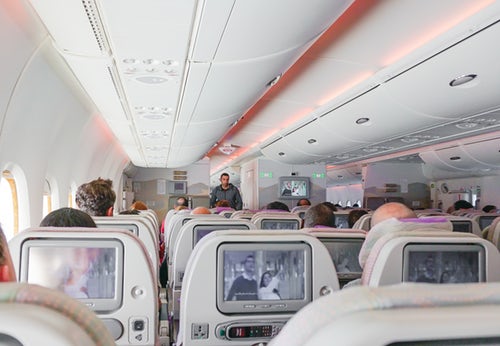Traveling by plane is more than just a mode of transportation; it’s an experience that connects cultures, reunites families, and opens doors to new opportunities. However, for those suffering from aerophobia, the fear of flying turns what should be exciting into something paralyzing.
If you or someone close to you avoids air travel due to this fear, know that proven solutions can bring relief. This guide explores the causes, the most effective treatments, and the technological innovations transforming how we tackle this phobia.
Fear or Phobia? How to Identify the Difference
Feeling fear in challenging situations is natural; it’s our survival instinct in action. However, when this fear becomes irrational and interferes with daily life, it is classified as a phobia. Aerophobia is one of the most common phobias and can severely impact the personal and professional life of those dealing with this challenge.
What is Aerophobia?
Aerophobia is characterized by an extreme fear of flying and can be triggered by factors such as:
- Fear of accidents: Excessive worry about flight safety.
- Claustrophobia: Discomfort in confined spaces.
- Acrophobia: Fear of heights.
- Loss of control: Feeling powerless in emergencies.
- Anxiety related to turbulence: Fear of weather instability.
According to the International Air Transport Association (IATA), about 15% of passengers experience some level of fear while flying. This fear, often irrational, limits personal travel, work opportunities, and important moments.
Why is Flying Safe? Reassuring Statistics
The fear of flying is often fueled by misconceptions. However, statistics show that:
- The likelihood of an airplane accident is 1 in 11 million, far lower than car accidents (1 in 5,000).
- Flying is safer than riding a bicycle or crossing a busy street.
- Planes undergo rigorous inspections, and crews receive constant training.
These facts highlight that aerophobia is more tied to emotional perceptions than actual risks.
How to Treat Fear of Flying? Therapeutic and Technological Solutions
Overcoming aerophobia involves a combination of traditional and advanced techniques. Here are the most effective methods:
- Psychoeducation: Knowledge That Frees
Psychoeducation reduces fear by demystifying aspects of flying.
Why does it work?
- Explains how airplanes function.
- Highlights the safety routines of flight crews.
- Addresses phenomena like turbulence in an educational way.
Testimony from Rossana Potier, commercial pilot:
“Many fears arise from a lack of understanding. It’s rewarding to see patients feel confident once they understand how planes and crews are prepared.”
- Virtual Reality (VR): Controlled Immersion
VR allows patients to simulate flight experiences in a safe environment.
How does it work?
- Simulates all stages of a flight: check-in, takeoff, turbulence, and landing.
- Scenarios can be adjusted to reproduce specific situations.
- Simulations are repeated until the brain learns to react more calmly.
- Hypnosis: Reframing Fear in the Subconscious
Hypnosis helps reprogram negative associations related to flying.
Benefits:
- Replaces fears with feelings of safety.
- Works through traumatic memories subconsciously.
- Promotes positive changes in thought patterns.
Practical Tips for Facing the Fear of Flying
- Understand How Flights Work: Knowledge reduces anxiety. Turbulence is normal and poses no real danger.
- Practice Mindful Breathing: Inhale for 4 seconds, hold for 7, and exhale for 8. Repeat until calm.
- See Fear as an Opportunity for Self-Discovery: View fear as an invitation to overcome internal insecurities and strengthen your resilience.
- Visualize Positive Moments: Focus on the rewards of the trip, like reunions or new experiences.
- Distractions During the Flight: Bring books, podcasts, or movies to keep your mind occupied.
- Gradual Exposure: If fear is severe, try progressive exposure: visit airports and start with short flights.
- Connect with the Purpose of the Trip: Remember that flying is just a means to greater and more meaningful experiences.
Seek Professional Support
Facing the fear of flying is not just an external journey but also an internal process of discovery. With clear information, technological advancements, and specialized support, each flight can become an opportunity for growth. After all, conquering fear is a courageous step toward a freer and more fulfilling life.

